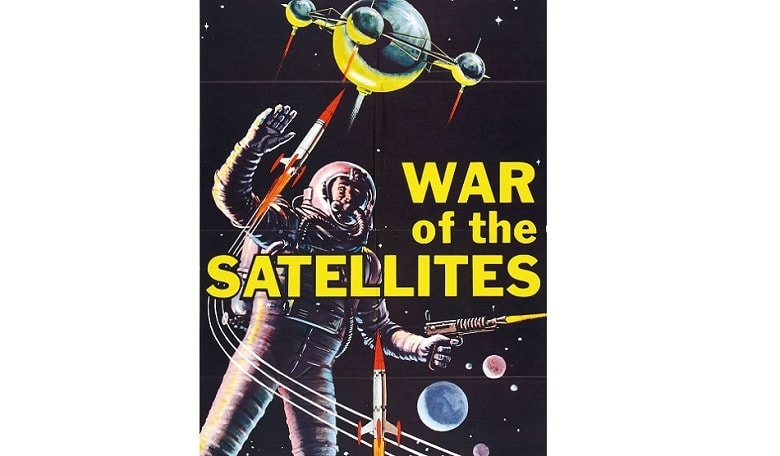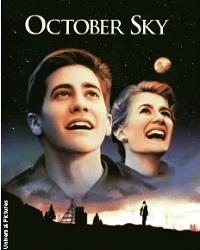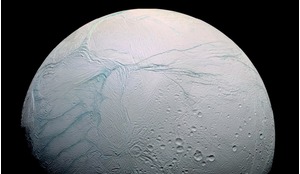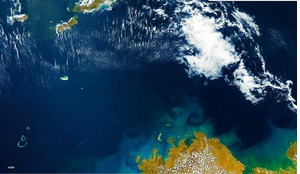Although the rabid conspiracy theorising has died down as of late, the truth is, people still have some wild theories as to what happened to missing Malaysia Airlines Flight 370. The refrain you hear over and over again is that, “We are in an era of unprecedented growth in the satellite sector! Surely if the flight simply crashed we would have its location data by now! That’s the whole point of having a bunch of highly-developed satellites!”
Such sentiments then regularly segue into outright babbling. “It’s all a lie! A plot hatched by the State Department, the Freemasons, and Space Lizards from Planet Whatever! The flight was hijacked! It was a heist! And the sheeple are falling for it!”
And when Malaysia Airlines Flight 17 was tragically shot down over east Ukraine last summer, conspiracies over MH370 fed seamlessly into conspiracies of the latter flight’s fate. People eager to deflect the blame from Russian-backed rebels in the area, for example, actually tried to argue that MH17 was, in fact, MH370 – and that it was literally “planted” in the local fields as a means of discrediting the rebellion.
Without going into tedious detail as to why, in fact, the MH370 case is a perfect example of how our satellite technology can, and does, frequently fail us here on Earth (let alone in space), I want to point out that the completely unrealistic expectations of so-called “MH370 truthers” are not that odd when you consider the way in which satellite technology is portrayed in pop culture all over the world.
It used to be that satellites inspired only a kind of fearful awe. The Space Race between the United States and the Soviet Union certainly contributed to that. Recall the movies such as 1958’s “War of the Satellites,” inspired in its dramatism by the Sputnik launch.
Yet far beyond politics, any kind of new technology naturally inspires apprehension. Until we get used to it, that is.
Today, the general public so used to satellite technology – and, I would argue, rapid development of technology in general – that when it fails spectacularly, we tend to disbelieve what is happening, and, occasionally, blame the Space Lizards.
Roger Waters criticises previous satellite technology use as purely driven by money
How did we get here with regard to satellites in particular? Well, it does help to consider the satellite’s more recent role in pop culture, one that has developed and matured since the Cold War waned, and, eventually, came to naught.
The satellite’s post-Cold War rebirth
It used to be that satellites inspired only a kind of fearful awe
Remember the original Live Aid concert in 1985? It was the West’s way of raising money for starving people in Ethiopia, and in terms of actual fund-raising, it really worked.
It also inspired Roger Waters of Pink Floyd fame to release a song called “The Tide is Turning (After Live Aid).”
I love Roger Waters, I really do. I love Pink Floyd (who in their right mind doesn’t?). Still, I can’t help but chuckle at the feel-good lyrics of this particular single, released just a year after my birth in the then-Soviet Union:
“Now the satellite’s confused / ‘Cause on Saturday night / The airwaves were full of compassion and light / And his silicon heart / Warmed to the sight of a billion candles burning / Oh, oh, oh, the tide is turning.”
I understand the message, of course. It’s a bit cheesy and self-congratulatory as far as the Western perspective goes, but the song was also written well before the Age of Irony.
In the beginning of the song, Waters criticises previous satellite technology use as purely driven by money, by “moonshots and world title fights.” He also expresses his anxiety over the nuclear standoff as a product of the Cold War, when he sings, “Used to look in on the children at night / In the glow of their Donald Duck light / And frighten myself with the thought of my little ones burning.”
 The Dave Matthews Band
The Dave Matthews Band
All of these are absolutely normal, human emotions. And the song didn’t even go anywhere, at first. It peaked in the UK at number 54 that year.
It was, however, sung with renewed vigour in 1990, alongside such popular musicians as Joni Mitchell and Cyndi Lauper, at a very famous performance of The Wall in Berlin, at a concert meant to commemorate the fall of the Berlin Wall just eight months prior.
And the song serves as a good example of how our overall anxiety over this particular technology evolved as the Cold War itself ground to a halt.
Someone’s secrets you see
The sinister themes of ‘Enemy of the State’ may be all too familiar amid on-going surveillance scandals
“Satellite in my eyes
Like a diamond in the sky
How I wonder
Satellite strung from the moon
And the world your balloon
Peeping Tom for the mother station”
The single “Satellite,” released by Dave Matthews Band in 1995, says a lot about both the beauty of technology and our privacy concerns.
Dave Matthews Band, or DMB as we called them in high school, had a knack for taking banal subjects and making them seem gorgeous. In a voice that seems almost too shy to be singing, Dave Matthews croons about the satellite as both a replacement for the star in the original nursery rhyme (this is where the line “like a diamond in the sky” comes from, the original verse being, “Up above the world so high / Like a diamond in the sky”) and as a sinister technology that is probably peeping into your curtains like now.
Leave it to Dave Matthews, I suppose, to award a sexual charge to what is essentially a huge hunk of expensive metal in orbit (remember, this song was written before satellites began getting radically smaller).
Once again, the song “Satellite” wasn’t a huge hit (it peaked at number 34 on the pop charts, and at 18 on the alternative charts). But what it managed to do was convey a certain zeitgeist.
In 1995, we weren’t yet entirely used to referring to technology as “sexy.” That phrasing would pop up everywhere a few years later, when Apple began championing the idea of gadgets that would be both functional and beautiful.
But we were on the cusp of a major revolution in how we viewed technology, and “Satellite” in that sense, seems like a kind of prophecy.
The dangerous beauty of the technology is like the dangerous beauty of pop culture’s spies. They can destroy your life, sure - steal your secrets, turn the whole world against you, but just look at how stylish they are while doing it! What’s not to love about them?
Rogues and dissidents
Soviet postage stamp commemorating the launch of the first satellite
Fast forward to 1998. Long before the current scandal surrounding the US National Security Agency after controversial whistleblower Edward Snowden leaked information on mass surveillance, we already had movie blockbusters that cast the NSA in an unsympathetic light.
Consider “Enemy of the State,” an action thriller starring megastar Will Smith and Gene Hackman. Smith, who was already hugely famous for “Independence Day” and “Men in Black” (great films whose portrayal of anxiety about space and extra-terrestrial life deserve an article of their own, frankly), plays a family man who unwittingly stumbles into a vast NSA surveillance conspiracy and very nearly has his life destroyed.
Satellite tracking technology plays a crucial role in the film. Poor, hapless Will Smith – who was only trying to buy his wife some sexy lingerie like a good husband when a video incriminating top level officials was planted on him, cannot escape the all-seeing eyes targeting him from orbit.
Is it an evil superpower that’s watching our hero? No, it’s officials from his own country. In the absence of grandiose, Cold War-era enemies, filmmakers and artists had increasingly begun to search for the enemy within.
While scenes depicting tracking technology seemed unrealistic by 1998 standards, in today’s world, I’m practically tempted to consider “Enemy of the State” as an action-packed prophecy of sorts.
After all, how easy is it for the authorities to track someone who is, for example, carrying an iPhone? Technology that has become ubiquitous, easy to use, and beloved is also the technology that has, very quickly, erased most of our notions of privacy.
What is real?
Still, real life, I’m both sad and relieved to say, does not unfold according to an action plot specifically tailored to our short attention spans.
The sinister themes of “Enemy of the State” may be all too familiar amid ongoing surveillance scandals, but such themes are also a little too convenient for people who are eager to imagine the world as rigidly governed by a very limited number of forces.
‘Satellite in my eyes / Like a diamond in the sky / How I wonder’
The truth is, the kind of conspiracy theorising that arose in the wake of the disappearance of MH370 is governed by our anxious need to see life as predictable. A plane can’t just disappear! Another plane can’t just be shot down in broad daylight by accident! We have technology that’s supposed to prevent all that!
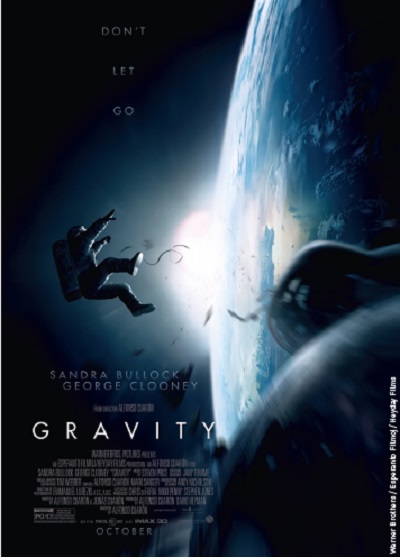 Gravity (2013)
Gravity (2013)
Satellite technology may seem like a kind of “rational force for good” (or for that matter, evil), but it still exists in a world that is governed to a great extent by human irrationality.
Consider this irrationality on a smaller scale. I’ve covered the Russian aviation sector for years, and I’ve noticed how vehemently the public sometimes resists the idea of pilot error as being responsible for a particular crash. Indeed, the public often resists the much more complicated idea that a crash is often the sum of several things going wrong at once: poor visibility, a pilot lacking experience, coffee spilled in the cockpit, whatever.
We shun complicated explanations because they are both difficult to process and entirely unreassuring.
Neil deGrasse Tyson
The fact that “smart” technology has yet to outsmart other forces, forces that are as diverse as weather patterns and human stupidity, is particularly unreassuring.
Inspiration and progress
Meanwhile, in 1999, the film “October Sky” basically launched Jake Gyllenhaal’s career and also re-cast Cold War-era anxiety as a source for inspiration.
The film tells the real-life story of NASA engineer Homer Hickam, who was so inspired by the Sputnik launch in 1957 that he decided to go into rocket science. There was just a little problem – Hickam was the son of a coal miner, who initially thought that his son was not being particularly realistic when it came to his aspirations.
The film beautifully explores familiar, but powerful tropes of overcoming adversity to pursue your dreams.
It also portrays Sputnik as inspirational rather than terrifying. Sputnik is not the evil Soviets’ flying devil machine – it is, in fact, a powerful technology that opens up new horizons for people who aren’t used to dreaming big.
It’s ultimately more than a technology – it is an idea that worms its way into your brain, and changes it for the better.
The film also does a great job in exploring the relationship between technology and class. “Fancy space rockets aren’t just for fancy boys!” it says. We may think this is self-evident, but the truth is, with a growing income gap in the States in particular, we still need this to be pointed out every once in a while.
‘Gravity’ and the drama of outer space
As technology became more ubiquitous, so did its portrayals. I do want to point out the fact that the movie “Gravity,” famously starring Sandra Bullock and George Clooney, clued us in to yet another threat associated with satellite technology: space debris.
This 2013 thriller, beautifully crafted by director Alfonso Cuaron, is a rather visceral exploration of the fate of two astronauts stranded in space.
The reason as to why they’re stranded? A Russian missile strike on a broken satellite has created a cloud of space debris (those pesky Russians again!).
The debris detaches Bullock’s character from her shuttle and also causes irreparable damage to the shuttle itself. High drama ensues. If you haven’t seen it, I don’t want to spoil it for you.
Many scientists, including the beloved astrophysicist Neil deGrasse Tyson, have pointed out all of the ways in which the science in “Gravity,” is, indeed shaky.
Space debris is of course a major problem that scientists have been talking about for years, for example. Yet the way it was specifically portrayed in “Gravity” was unrealistic, as plenty have argued. For one thing, it all happened too quickly. Usually, the kind of missile strike that is portrayed in the film would create problems down the line – not right away.
I must, of course, point out that expecting big budget cinema – or even small-budget cinema – to be realistic is to miss the point. Of course “Gravity” was never going to be 100-percent scientifically correct. Plot and pacing have their own rules.
Still, “Gravity” is one of those films that have shown the problem of space debris as entering the mainstream. In fact, it may end up doing what “Armageddon” did for the threat of asteroid impact. It is very hard to distract the public from their petty little problems on Earth so that they may consider, for a second, the very real, tangible and quite frankly, enormous threats that exist in outer space. If it takes a couple of hot Hollywood actors to do it – so be it.
When it comes to satellite technology, Roger Waters had expressed both his frustration and admiration of it
Yet once again, the role of technology is beholden to plot not just in the movies, but also in our heads – hence our continuing, unrealistic treatment of it.
Don’t expect films to be scientifically sound. Plot and pacing have their own rules
Technology fatigue
Satellite technology may be cool now, and interesting, and an inspiration for plenty of myths, but I would also argue that the public is getting a bit tired of it – the way the public gets tired of everything it does not fully comprehend.
What the majority cares about is whether or not the technology works. The complicated processes behind its workings inspire apathy in everyone outside the field.
In fact, I would like to conclude by arguing that the conspiracy theories that arose in the wake of MH370’s disappearance are a good example of said apathy and fatigue.
Nobody wanted to know the very complicated reasons behind why finding the lost aircraft was such a momentous challenge. When you have everyone from CNN to controversial rocker Courtney Love drawing “maps” to where the craft is surely located – as opposed to trying to understand how the signals on those famous black boxes may have corresponded with other technology, for example – you can see where the problem is.
Satellite technology thrills us, but only to a point. It is useful for inspirational/terrifying montages in films, or as a backdrop for subverted yearning/anxiety in songs.
The rest of the time, it is merely the fruit of a whole lot of hard, complicated, and yes, thoroughly “unsexy” work, by people who are mostly nothing like George Clooney or Jake Gyllenhaal. And when our religious awe of it intersects with the ignorance we cannot help but display (most of us not being rocket scientists, after all), conspiracy theories are born.





